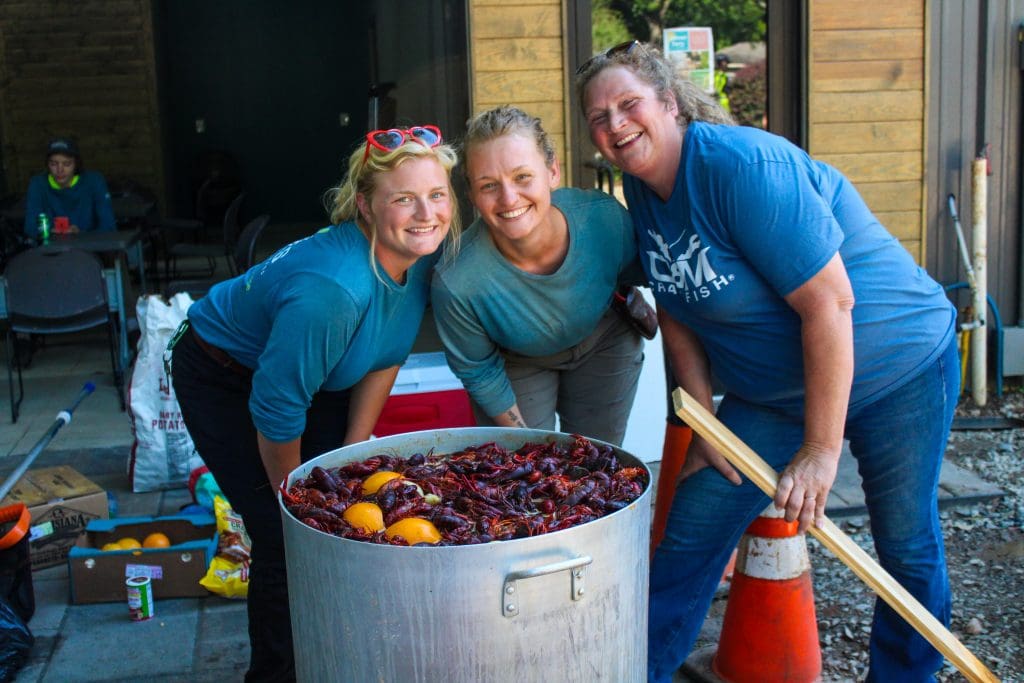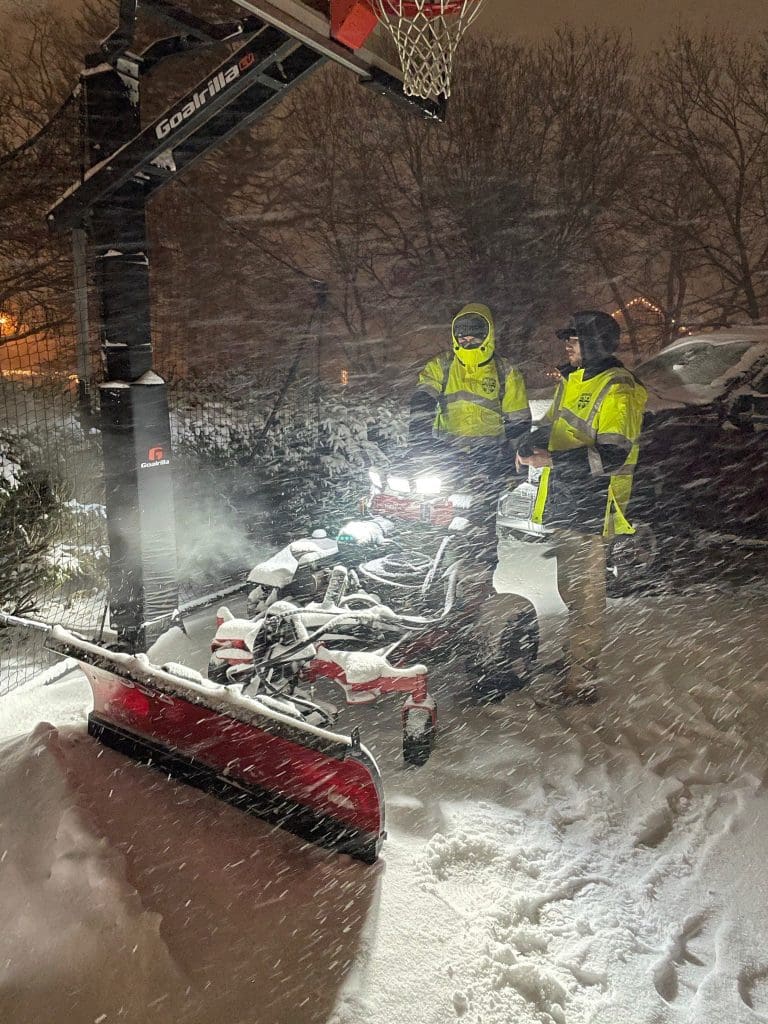
The landscaping industry is undergoing a significant transformation with the integration of technology, a new approach to work culture and a move towards environmentally friendly practices. These changes are making a positive impact on businesses and generating engagement among the next generation.
Powered by Technology
The impact of technology on the landscaping industry is increasingly evident. Technology is transforming how landscaping companies operate and deliver their services, from innovative software and apps to autonomous equipment.
“The fact that the industry is at the cusp of a new wave of innovation makes it an exciting time to be a part of the green industry,” says Shireen Salehi, co-founder of GoMaterials.
After working for toy manufacturer Mattel, Salehi joined the landscaping industry because she saw an opportunity to disrupt the wholesale procurement process with technology. She co-founded GoMaterials, an online marketplace for plant sourcing, after discovering the difficulties landscapers had in sourcing materials through traditional methods.
“We are using technology to improve every aspect of wholesale sourcing for mid-to-large sized landscape businesses,” she says. “We act as an extension of our customers’ teams, supporting them with all aspects of procurement, from estimation to delivery.”
Young business leaders like Salehi and her colleagues show the possibilities for innovation in the industry. The next generation of students and young professionals is interested in using technology to make an impact.
Technology has also changed the way students learn. Jim Funai, Ph.D., assistant professor of plant science and landscape technology at Cuyahoga Community College, says embracing technology saved students when pandemic lockdowns began in 2020. The school turned to virtual education programs so students could complete their courses on time.
Funai wondered if it was possible to teach a hands-on subject like landscaping or plant science virtually because it had never been done before. He was tasked with creating videos in the field or demonstrations to teach students the same principles as if they were on-site. But he found that students who participated in virtual learning during the semester were just as successful.
Virtual education has also allowed the college, which has campuses across Cleveland, to reach students in other parts of the city. In the past, most students lived near the school so they could attend daily classes. With the addition of virtual courses, students can take classes online regardless of their location.
“That flexibility is one of the most important things we can offer, especially as a community college,” he says. “Our mission is to meet them where they are, be understanding and focus on the bigger picture.”
Funai adds that technology is also starting to influence how people work. Artificial intelligence (AI) is building smarter ways to do business by allowing employees to save time on tasks typically done manually. He has incorporated AI into teaching students how to estimate a project.
“Ten years ago in my estimating class, we were out in the field using a wheel, a tape measure and all of that,” he says. “(It) was weeks’ worth of training to make sure they could get that. Now it’s pop it in the AI and let it measure everything. So, it’s going to change a lot and really alter the way that we go about many of our jobs.”
According to Hope Smith, ultimate experience manager at Plants Creative Landscapes, based in Scottdale, Georgia, technology drives engagement in potential employees. Applicants are interested in companies willing to embrace innovation and push the envelope. Her company has recently incorporated robotic mowers into its fleet.

“I think that sort of mindset as a company is something people are looking for,” she says. “It has been a draw for people because they see that, and it’s like this cool new thing that they’re interested in learning more about.”
Christian Schloegel, owner of C+I Services LLC, based in Clarendon Hills, Illinois, sees more interest from new hires when they discover he has the equipment to tackle hard labor like digging trenches. He is a young entrepreneur who started his first lawn care business in the fifth grade. Now, as a college student, he runs a full-service landscaping maintenance company with a crew of his peers. Adding equipment to complete a job faster saves him money, but he also sees the benefit for his employees.
“Equipment is a differentiator because it’s not a glorious job to be out there in the heat, doing this hard labor,” Schloegel says. “But if you have the right equipment, it makes the job a lot more fun, and (you have) a better product. And that’s one way to attract people.”
Culture Is Key
Along with technological advancements, the next generation wants to work for companies that differentiate themselves from the competition. The fundamentals, like fair pay, benefits, PTO and career growth, are essential, but companies must motivate the next generation with a strong mission, core values and a great culture.
“Anybody can leave one company and go down the road for an extra buck, but it’s about the company culture and how those guys enjoy showing up to work every day, which also reflects the quality of their work,” Schloegel says.

Jenn Myers, executive director of the NALP Foundation and senior director of workforce development, worked with the NALP Young Professionals Network, a platform to help people under 40 connect with peers and mentors. She says a company’s website and social media can be good tools to promote a company’s culture by sharing photos of employee experiences.
“It’s more about (showing) this is a great culture: here are the things we do for our employees, here are the ways that we have fun, here’s the way we mentor, here are the ways we train, here are the ways we reward,” she says.
When building and showcasing culture, employers should remember that younger generations may have different values. Myers says companies can find their strengths by asking their current employees what they like about their work environments and what could be done better.
“It’s not you have to throw everything out that you’ve done before and do all this new stuff; it’s (asking) where do you need to change or evolve, and how does that fit into what you’re currently doing? What small changes can you make?” she says.
The next generation is exposed to more information than previous generations with a 24-hour news cycle, social media and the internet. They interact with more diverse groups of people than they may find in their local communities.
“Students we are recruiting into our profession have different experiences with the world,” says Skyler Westergard, learning & development specialist at LandCare, based in Frederick, Maryland. “Seeing the things that happen in the news and world events affects the way this generation sees the world.”
The younger generation has become accustomed to instant feedback online through comments, likes and shares of social media posts or completing missions in video games. Everyone appreciates feedback to help them see how they are doing and where they could improve. Students receive feedback from their instructors to help them learn, so employers should do the same.
“It’s just a quick recognition (of) ‘you guys did awesome,’” says Funai. “‘Hey, that job looks great,’ and that quick little feedback is that dopamine rush (that) builds that confidence in what they’re doing.”
There has been a shift among students looking for employment at companies that offer work-life balance. Funai says the companies that visit his college and talk about providing work-life balance have garnered more interest from students.
“We had an employer come in — it was the smartest thing I’ve ever seen an employer do — they said, ‘We want to know what you guys want. What can we do that would bring you to work for us?’” Funai says.
The question led to a discussion about working 10-hour days for four days a week. The students were open to the idea of working longer days because they saw the benefits of a three-day weekend.
Smith says her company, Plants Creative Landscapes, looks for culture fits with applicants. They provide a robust training program for people who fit in with their values and ethos even if they do not have a landscaping background.
“We make a concerted effort to have an open-door policy when it comes to recruitment,” she says. “So, we’re looking for somebody who’s going to be a good fit for us culturally and who has a desire to learn and grow.”
The next generation of employees will hold their employers more accountable for their actions within the company. It is less about what you say you stand for and more about what you are actively doing.
“I think that culture is a little bit of a buzzword, and anytime something becomes a buzzword, it sort of loses its meaning a little bit,” Smith says. “But I think that the biggest thing for me when it comes to culture is authenticity and practicing what you preach.”
New Ways to Recruit
As the industry continues to evolve, we need to do a better job of showcasing the benefits of working in landscaping to attract future generations. Traditional recruitment methods, such as job fairs and online listings, may not be enough anymore.
Companies need to get in front of students in the classroom to give them hands-on experience in landscaping, according to Westergard. Before he worked for LandCare, he was an instructor at Brigham Young University, so he has seen both sides of the recruitment process.

If a company can work on a project with a class, they get more direct interaction and can make a more significant impact. Students benefit because they learn from someone active in the industry, which lasts much longer than a giveaway they picked up from a job fair.
“(If) you are helping them with a project that they’re working on, (you are) getting right to the core audience, and you can have more time to interact with them in a more personal way,” he says.
Finding the right talent may require looking beyond the green industry. Smith came from a retail background when she joined Plants Creative Landscaping. She was drawn to the company because she wanted to make a more significant impact. The big box store where she was employed did not necessarily offer the same opportunity.
“I think there’s a lot of focus on the employee experience as an industry and keeping really great people in working in the industry,” she says. “(But) recruiting outside of the industry to places where they might not have the landscaping knowledge, but they have a desire to work outside, and they have a desire to make an impact on people’s lives. The landscape industry is a really great way to do that.”
Sustainability is also becoming increasingly important among the younger generation of professionals. They are looking to make a positive impact on the environment through work.
Companies that emphasize sustainable practices such as reducing waste, conserving resources and moving toward electric equipment can attract new talent.
“(If we) look at what that generation values and help them see that landscaping offers a lot of those things: beautify the environment, stewardship over the environment, natural resources and green sustainability,” Westergard says. “There’s (not) an industry that has more of a direct influence on natural resources and what happens with soil, plants and water.”
The opportunity to make a direct and lasting impact on the environment and create value for communities is apparent in landscaping. Still, the next generation may need to make that connection, so Westergard thinks we need to find a better way to show them.
One way, according to Schloegel, is through TikTok and YouTube videos. He has had friends who are not in the industry send him videos of people mowing lawns that have gone viral among peers. There is a soothing, meditative quality to them that appeals to people.
“I think people who don’t think about the green industry, they really don’t exist (to them),” he says. “But when they get these viral videos, they’re watching because it’s kind of cool, and it makes them think about the industry.”
Old-fashioned word of mouth is a powerful tool in attracting new people into an industry. Myers says she encourages NALP members to share what they do and why they love it so that landscaping can be in the conversation when people talk about great careers.
“I think when individuals tell their own personal story, it’s very helpful because that’s what helps individuals latch on and find something that vibes with them,” she says. “Something that employees and organizations can do is take every opportunity that they have, when they are around the public, to talk about careers and the work that they do.”
This article was published in the May/June issue of the magazine. To read more stories from The Edge magazine, click here to subscribe to the digital edition.

